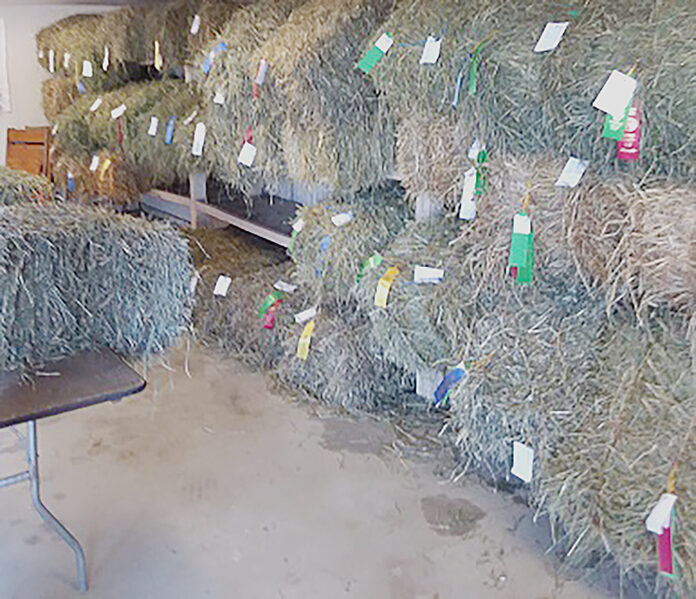
As spring arrives, farms are bustling with planting activities, but my mind is already focused on hay quality, especially for the upcoming hay show at the fair. The fair is a vibrant event with attractions for everyone, from animals and rides to games, competitions, educational programs and auctions.
For years, the Medina Soil and Water Conservation District has assisted during the Medina Fair hay show. If you’ve ever glanced at a bale of hay and found it indistinguishable from countless others, let me shed some light on the criteria used to assess their quality.
Stage of maturity
When evaluating a bale one category, that which receives the most consideration is the maturity stage. A bale will score higher in this category if there is evidence the hay was cut at an early enough stage to ensure adequate nutritional value remains in the leaf material and pre-emerged seeds. This, in turn, transfers to more nutrition for the animals.
A hay stand cut at the proper maturity level has softer stems, more leaf surface area and nearly no evidence of seed head or bloom emergence. Hay made past this maturity level is usually lower in nutritional value, do to the plant transferring nutrients out of leaf production into seed head and bloom production. Grass stems also stiffen up and are less pliable therefore less palatable for the animals.
Leafiness
Leafiness is crucial due to the nutrient value found in the leaf as stated above. When preparing the hay for baling, the moister content must be considered. Hay that is too wet will not keep and will likely mold. In some cases, wet bales can heat up enough to start a fire.
Hay that is too dry does not have the potential for such a hazard, but it will have potential to degrade the quality of the product. Overly dry and crispy hay can cause leaf shatter. When this occurs, the majority of the leaf material stays out in the field and does not end up in the bale. This is likely to occur if the hay is too dry when raking. Leaf shatter causes unnecessary loss in nutrients and quality.
Color
Color receives a lesser consideration when evaluating hay due to the fact that it is not necessarily an indicator of nutrient quality. A uniform and greener color is more appealing and often more marketable, but a sun bleached bale may have the same maturity level and nutrient content, it just laid in the sun for a longer period of time. For these reasons, it is a consideration, but of lesser influence when grading.
Free of weeds and foreign matter. This one is self-explanatory: look for plants that should not be in your field, therefore not in your bales. This becomes a larger issue when the weed percentage increases and the weeds found are possibly toxic to certain animals. Weeds are not the only thing that can be found, chances are there is more than one or two little critters that unfortunately were hiding in the windrow when baling. There is also a chance that trash, blown by the wind, can get caught in the window and baled up.
Condition
Are bales uniformly cut, square, tightly packed and the correct length for your purposes? More or less it is a handsome looking bale that will stack easy and keep well. This category tends to speak more to the quality of the machinery used to bale the hay.
Regular maintenance and upkeep can ensure machinery that has seen many seasons is still in working order. Things that are worn out may result in loosely packed bales that do not stay square and will be more difficult to store and handle.
By adhering to these criteria, farmers can produce top-quality hay for the fair, ensuring both the health of their animals and their success in the show.












